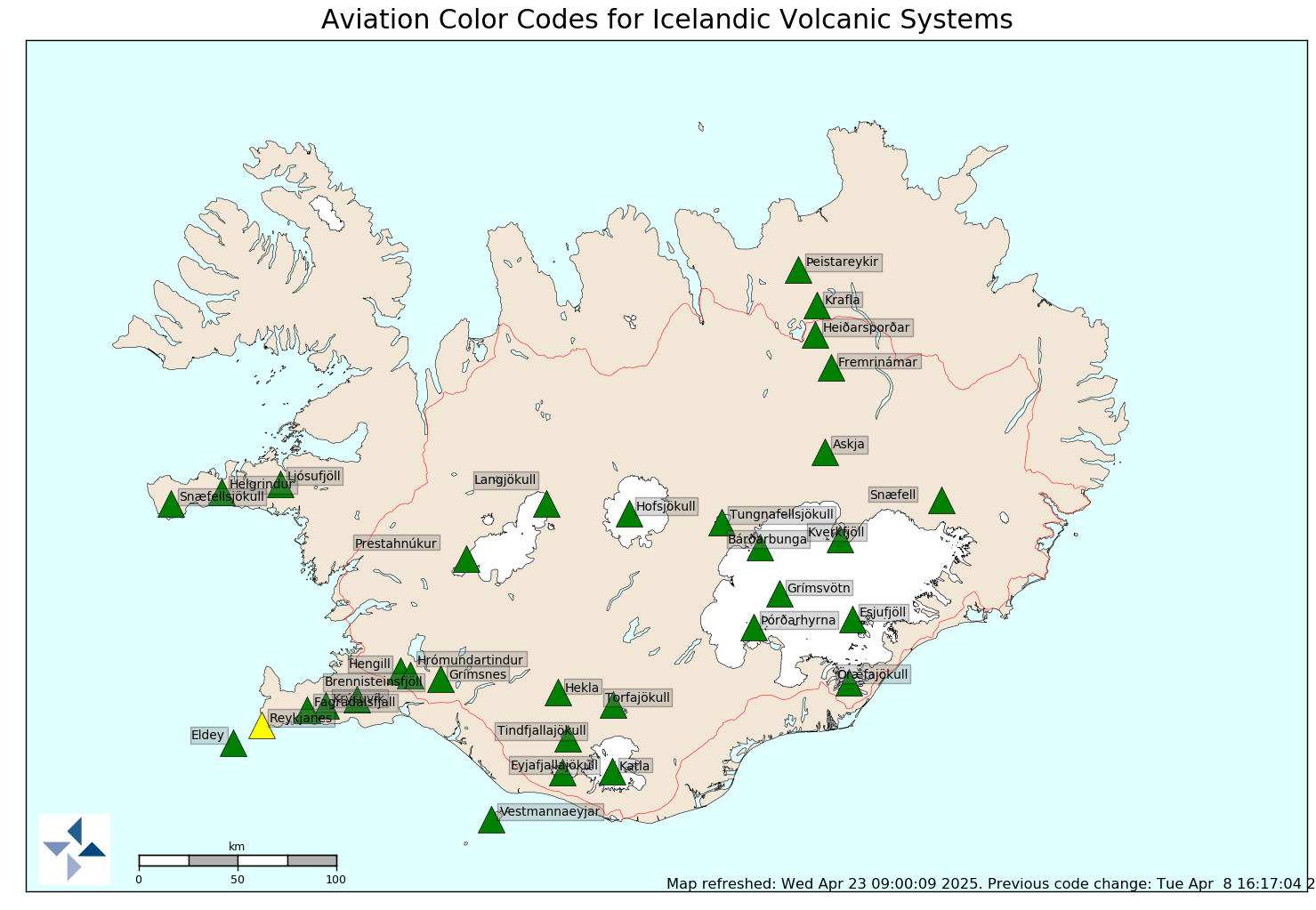A small eruption started at 0600 this morning close to the eruption that was on Saturday. Scientists on scene, estimate that the fissure goes further to the north than the previous eruption around 1,5 km. long. A lavafield of about 3 km flows to the east. Very bad weather is at the eruption site, sandstorm and windy conditions.The Civil Protection and Emergency Management is working on Alert Phase. The Icelandic Met Office has raised the Aviation colour code to red for Bárðarbunga/Holuhraun.
More eruption warning!Mila-WEBCAMS "Holuhraun"



